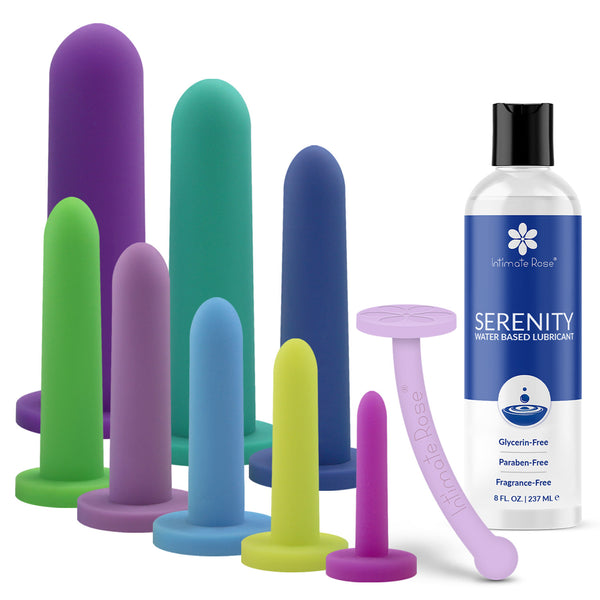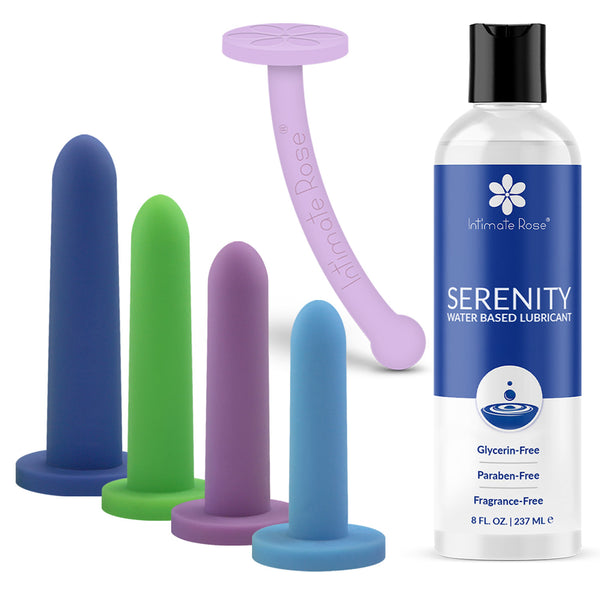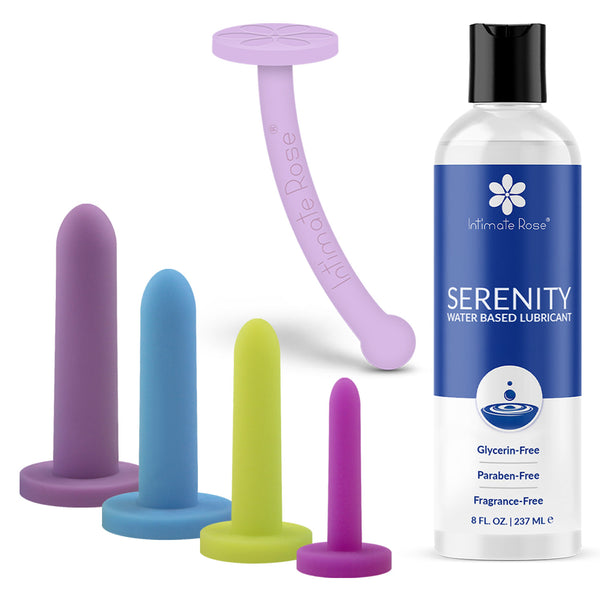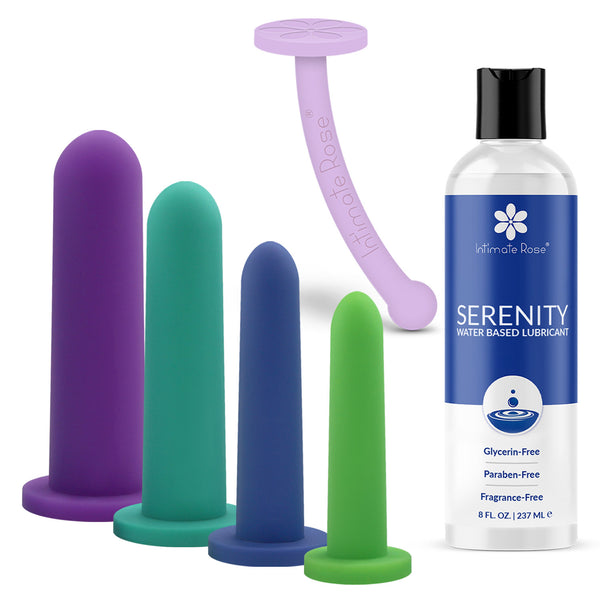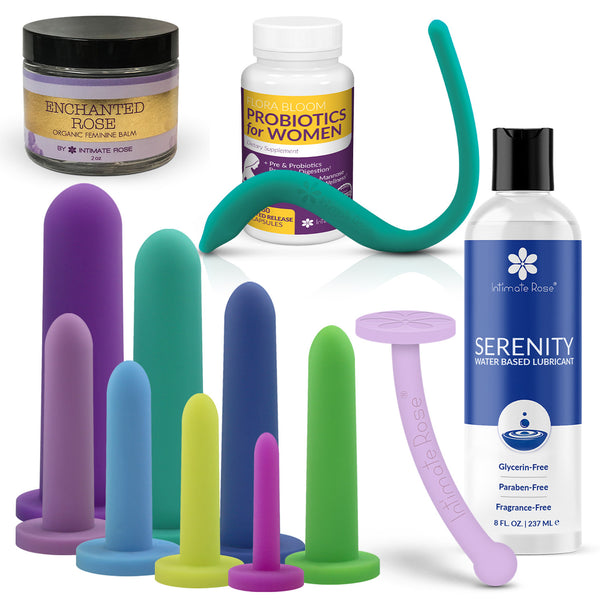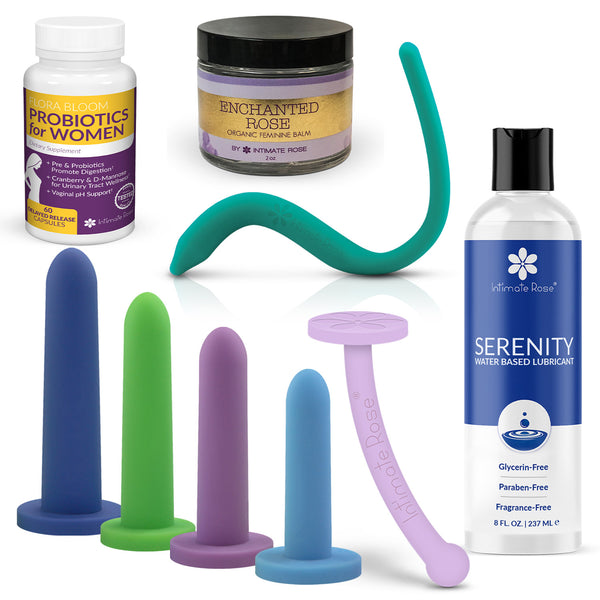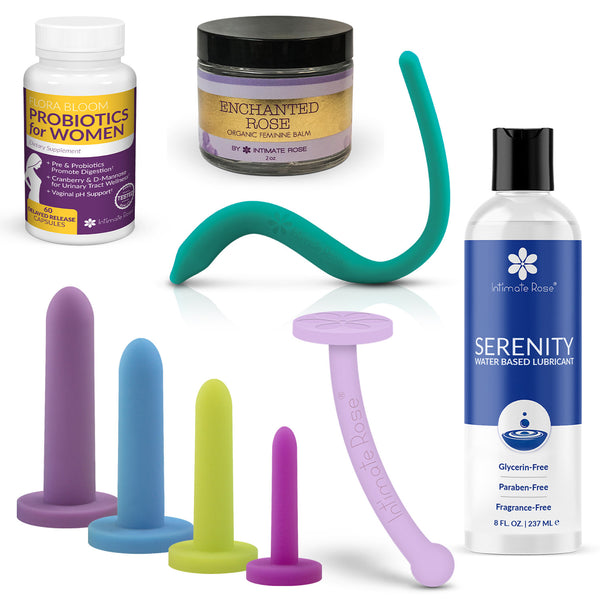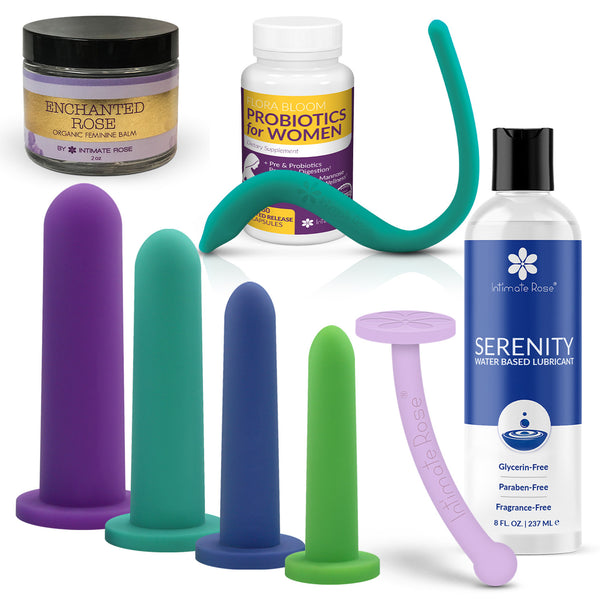What You Need to Know About Vaginismus
Vaginismus is the experience of a reflexive contraction or spasm around the vagina during attempts of penetration. This can include penetration during sexual intercourse, pain when inserting a tampon, or a speculum during a medical examination.
Women who experience vaginismus often have pain, sensations of burning, cramping, spasms, and difficulty or inability to receive vaginal penetration.
Tight? Start here!
Primary Vaginismus
There are two types of vaginismus: primary and secondary. Primary vaginismus is a condition wherein a woman has never been able to receive vaginal penetration and is unable to have sex.
It is often discovered during the teenage years or early twenties during first attempts at using a tampon or engaging in sexual intercourse.
Secondary Vaginismus
Secondary vaginismus is often experienced after a period of normal sexual function. This is often attributed to hormone changes, gynecological cancer treatment, childbirth, gynecological surgery, menopause, yeast infections, or a traumatic event.
Women who experience vaginismus may also experience fear, general anxiety, avoidance of certain activities including sex, and protective behaviors.
These protective behaviors may include muscular guarding or clenching of the muscles in the pelvic floor, buttocks, hips, thighs, neck, chest, and shoulders.
Treatments
The good news is that that there are several gentle, non-invasive treatments available to address both primary and secondary vaginismus. This includes pelvic physical therapy, a specialized form of physical therapy done with a highly trained pelvic physical therapist.
Dilator Training
Dilator therapy, commonly referred to as vaginal training is often included in vaginismus treatment protocols. Vaginal dilators are used to train the muscles to relax, restore vaginal width, depth, and elasticity to allow for sexual intercourse, tampon use, and medical exam.
The Intimate Rose Vaginal Dilators are cleared to treat the symptoms of Vaginismus such as painful intercourse, known as dyspareunia.
How does a vaginal dilator work?

Lubrication and Balms
Lubrication and general care for the sensitive vulvar and vaginal skin is particularly important in addressing symptoms of vaginismus, especially secondary vaginismus.
Low estrogen levels can result in vaginal dryness and irritation. This hormone change is common during and after menopause, after childbirth, while breastfeeding, and after hysterectomy.
Use of vulvar balms to soothe the skin during the day, and liberal use of lubricant during sexual play and attempts at penetration are helpful in reducing pain.
Counseling and Behavioral Therapy
Counseling and other forms of cognitive behavioral therapy are also beneficial depending on the woman’s goals and individual needs.
Often a cycle of pain is experienced when a woman with vaginismus attempts sex. Because pain has been experienced during previous attempts at penetration, her muscles instinctively contract in a guarding reflex, which then prevents penetration and often results in exquisite pain during attempts.
Meditation, guided imagery, guided relaxation, cognitive behavior training, and dilator training are all treatments that help to overcome vaginismus to allow for pain free penetrative sex.

Tight? Start here!




